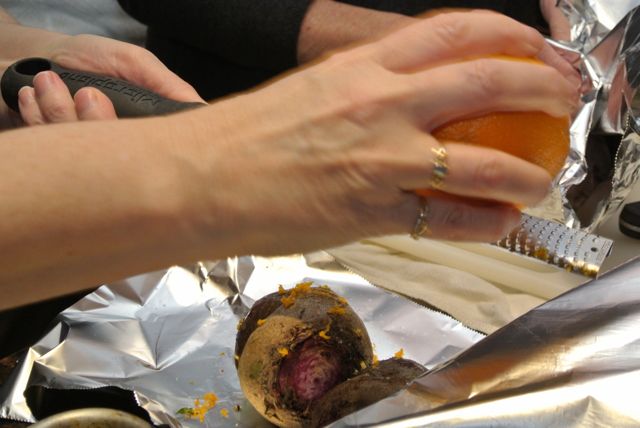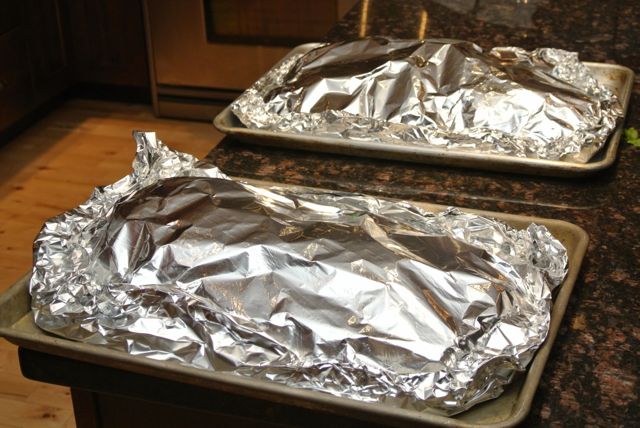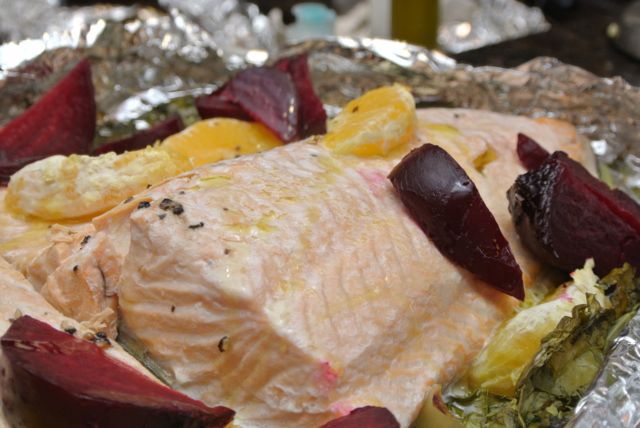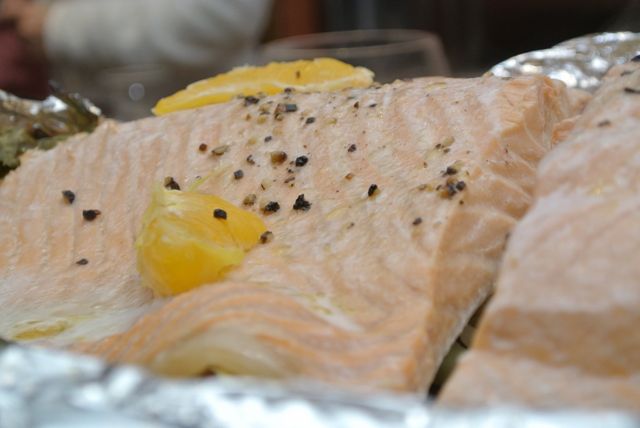
I recently had the opportunity to host a cooking class for a fun group of women travel writers here to experience some winter adventures in Maine. The weekend included skiing at Sugarloaf, a wonderful winter hike into the Flagstaff Lake Hut operated by Maine Huts and Trails, and a cooking class and wine tasting with me. It was a very fun group to be a part of, including writers Hilary Nangle, Jackie Dishner, Mimi Steadman, Liz Fleming and Shelia Grant, as well as Nancy Marshall of Nancy Marshall Communications and Suzie Hockmeyer of Northern Outdoors.
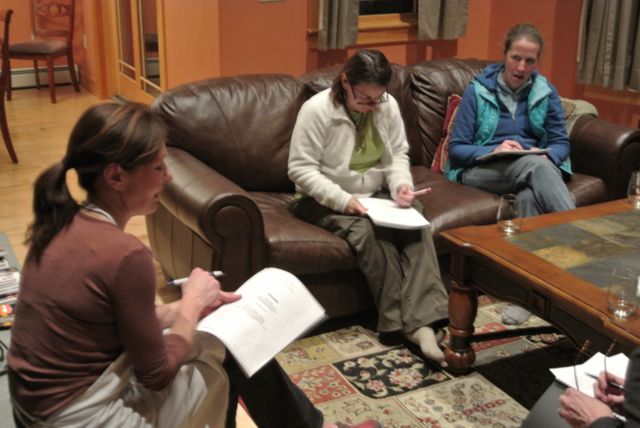
Whether home in Maine, or on our culinary bike tours in Italy, I am always eager to include wonderful local foods in my classes. For this class, we were very fortunate to have some incredibly fresh local salmon available to us. Supplied by Maine Aquaculture Association ( http://www.maineaquaculture.com ) in Hallowell, ME, their amazing salmon, both fresh and smoked, can be purchased at Hannaford’s. Their smoked salmon is sold under the Heritage Salmon brand, http://www.heritagesalmon.com.
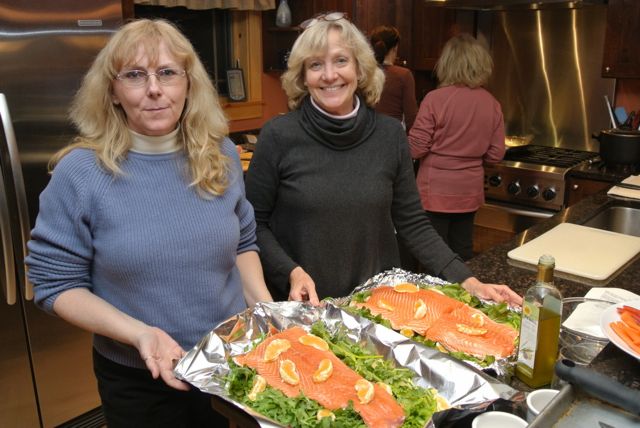
Maine Aquaculture Association farms their salmon here in Maine, with operations that span the state, from the coastline to the interior mountains. The parent fish live in the cold, blue waters of Maine’s coastal bays. They are fed a fortified, all-natural diet and watched over carefully to ensure a healthy broodstock. In the fall, these fish spawn and the eggs and sperm are collected and combined, and the resulting fertilized eggs are carried to hatcheries in the freshwater lakes of the Maine mountains. Here, the eggs hatch, and the salmon fry are watched over by the hatchery staff as they mature and their bodies change from being able to live in fresh water to needing salt water, one of natures amazing transformations, called smoltification. In early spring, this process is complete, and the smolts are ready for their transfer back to marine farms on the coast.
The fish are loaded into special tank trucks and shipped down to the coast, where they are loaded onto local boats and transported offshore to the marine farms. This process is completed as quickly as possible, to make sure all smolts are transferred before the inland waters get too warm, and to minimize the time the fish spend in transport.
Once in their new home, the fish are inspected by teams of divers to make sure they are adapting to their new surroundings. Here in the cool waters off the coast of Maine, high oxygen and strong currents provide the ideal growing environment for the smolts. Over the next 15-26 months, they will grow to large, silver, strong, healthy adults. The salmon farmers watch over the fish in their farms year round, with each season bringing its own challenges; the low temperatures, strong storms and freezing spray of winter, to the struggle to keep up with the salmon’s insatiable appetites as their metabolism increases rapidly when warmer weather arrives. The fish are harvested as they reach their ideal adult size, and they are sent to special processing plants on shore where they are packed for shipment all over the United States.
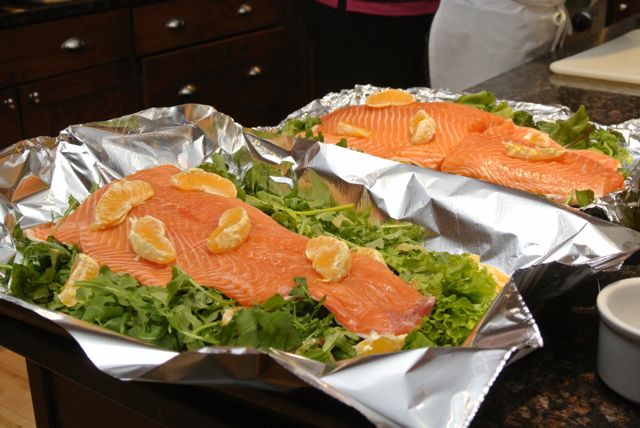
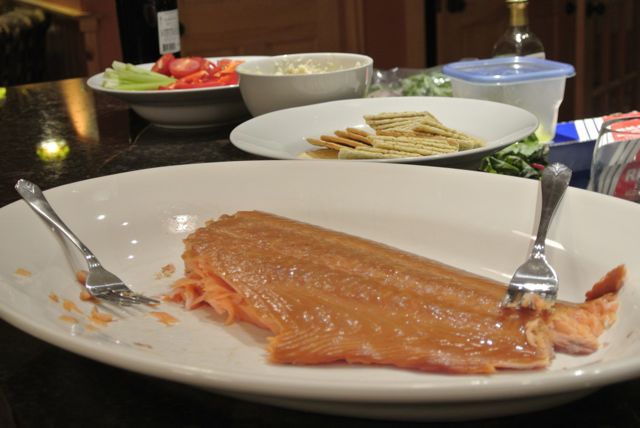
We were supplied to HUGE beautiful fillets to use in our class. I smoked half of one to use as part of our antipasti. I’ve posted my recipe for smoked salmon in a previous blog. This recipe I’ve used several times, it’s one I developed when I was cleaning out my frig at home before I left for a trip to Italy, and I wanted something easy! It reminds me of the hobo packs we used to make on camping trips – everything wrapped in aluminum foil and roasted over the fire, or here, in the oven. It’s a great way to use both the roots and the greens of beets. If your beets don’t have the greens, substitute your favorite; in our class, we supplemented the few greens that came with the beets with arugula.
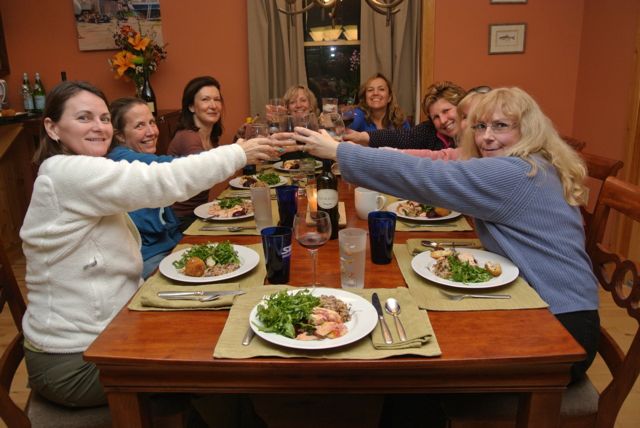
Oven Poached Salmon with Roasted Beets, Greens and Orange
Serves 4
4 beets with greens
¼ cup extra virgin olive oil
kosher salt and pepper
Zest of one orange
2 stalks celery, peeled and thinly sliced
Splash of pernod (optional)
1 orange, thinly sliced
1 ½ pounds wild salmon
Heat the oven to 400°.
Remove the greens from the beets, wash the greens and set aside. Place the beets into one or two pouches of aluminum foil. Drizzle with 1 tablespoon olive oil, season with salt and pepper and orange zest.
Roast in the oven until tender, about 45 minutes. Remove from oven and let cool slightly. Remove the outer skin from the beets. This can be done with your hands, or with a paper towel; simple rub the beets and the skin will pull away. Cut each beet into eight pieces. Set aside.
Place an 18 inch sheet of aluminim foil on a sheet pan. Spread the greens on the foil, and top with the sliced celery. Drizzle with 2 tablespoons olive oil and season with salt and pepper. An optional splash of pernod can be added at this point as well. Top with half of the slices of orange.
Place the salmon skin side down on top of the greens and vegetables. Drizzle with the last tablespoon of olive oil, season with salt and pepper, and top with the remaining orange slices.
Cover with a second sheet of foil and seal the packet on all sides.
Bake in the oven until the salmon is just cooked through, about 30 minutes depending upon the thickness of the fish. If the fillet is thin, start checking it earlier. Serve with the greens and roasted beets, topped with a drizzle of olive oil.
